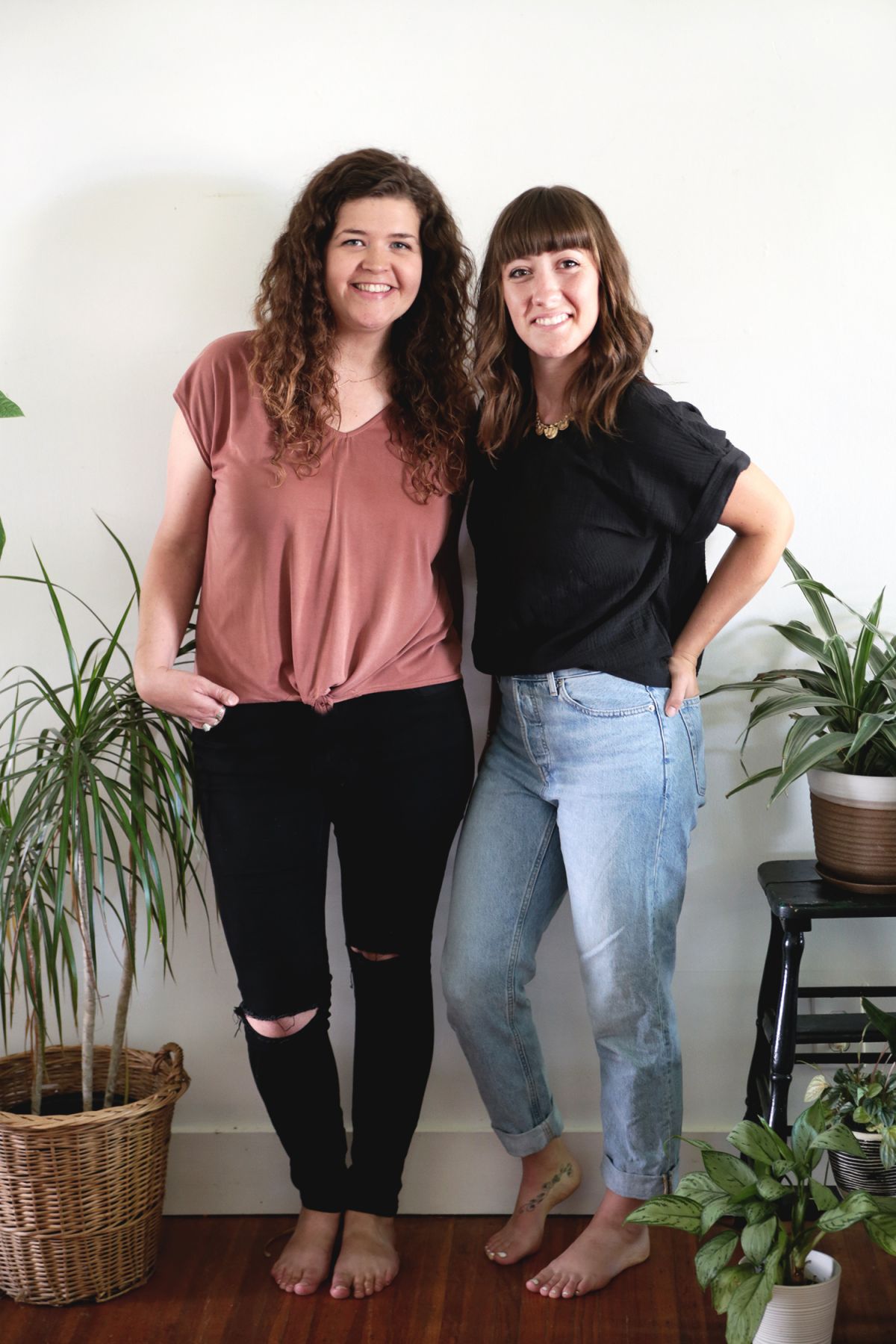I’ve seen these scaffolding style bookshelves popping up everywhere lately and have been loving them. I’m not sure that they’re usually called that, but they remind me of scaffolding, so that’s what I’m calling them! I love the simple design with the X in the back and love that they are adjustable. I’m definitely a fan of being able to adjust my shelving/storage, as seen here and here.
We decided to do built in drawers and shelves in the boys closet and get rid of their dressers to free up more space in their room; but they needed some kind of shelf space for all their things. This shelf was the inspiration for our shelf, but we needed to be able to customize the size – the bedrooms upstairs have sloped ceilings, so no tall furniture on one side of the rooms (and not to mention that price 😳), so we built our own. Then I convinced Mike to share the how-to for any other ambitious builders out there.
(Before we were ready to put this in the boy’s room, we used it for a studio shoot – I included some of those photos at the bottom so you can see it with the shelves arranged a little differently.)
.jpg) Materials:
Materials:
– 1x4x6′ pine board
– 5/4”x8x 8′ pine board
– two 1x12x8′ pine boards
– table saw
– square
– sliding mitre saw
– wood glue
– nail gun & nails
– drill
– drywall screws
– hand or power saw
-sand paper.jpg)
.jpg) Directions:
Directions:
Cut four 1-5/8 x 96″ pieces out of the 5/4 x 8″ board.
Cut one 54″ piece out of each of these.
Out of the remainder, cut ten 11-5/16″ pieces.
Cut two 1-1/4” x 72″ pieces out of the 1×4 pine board.
Make a line across the width of the board using a square, 35-3/8” from the end of each board.
Lay one board on top of the other and perpendicular with the edge of the top board even with the
line on the bottom board so that the top board will be centered on the bottom board.
Use a square and make sure the boards are perpendicular to each other and then draw a line on the opposite side of the board from the other line.
Repeat the process with the other board on the bottom.
Using a piece of scrap 3/4-inch pine, set your sliding mitre saw so that it will cut through half the thickness of the board. You will need to put scrap wood behind the board you are cutting to bring it out away from the fence so that the saw will cut a flat cut across the width of the board.
Cut out the material between the lines you drew on each piece. When you are done, the boards should fit together snugly and be flush with each other.
Lay two of the 54″ pieces on the floor with the 1-5/8” side of the boards facing up, space them 46″ from outside to outside making sure that the bottoms of the boards are even by putting them against a straight board and check that they are perpendicular to the board. When you have them set, place some weight on them so that they will not move.
Put the cross braces together and lay them on top of the leg boards.
Center the back brace and make sure that where it sits on the legs is even from the top and the bottom of the legs.
Using a pencil, mark along the edge of the back brace on each side where it sits on the legs and make marks where the legs are against the back brace at all four corners so that you will be able to draw lines on the back brace once you remove it.
Draw your lines on the back braces.
Using the sliding mitre saw, which is already set to cut half the thickness of the back brace pieces, turn the saw to a 45 degree angle and cut out the material between the lines on the back braces.
Set up the saw to cut 3/8″ deep into a scrap piece of the 5/4 wood.
With the saw set at 45 degrees, cut out the material between the lines on the legs. Make sure to test the fit at each joint.
Assemble the sides of the shelf by laying out where you would like the shelf supports to be located.
Our lower support was up 2-1/2” from the bottom of the legs and our top support was down 3″ from the top of the legs. You can lay out the other supports evenly, or to accommodate different spacing.
Mark lines where the supports will go on each leg.
Glue and nail the supports between the sets of legs.
Attach the back brace to the legs by gluing and screwing the joints.
Use a hand or power saw to cut off the parts of the back brace that stick out, making them even with the outside of the legs.
Cut four 48″ shelves out of the two 1 x 12 x 8′ boards.
Allow the glue to dry and then place the shelves on the shelf supports.
Sand as needed. Apply stain/finish or paint as desired.
**We wanted our shelves to be a bit more rustic, so we did not remove any saw marks or sand very much.**.jpg)
.jpg)
.jpg)
.jpg)
.jpg)
-Manda

.jpg)


